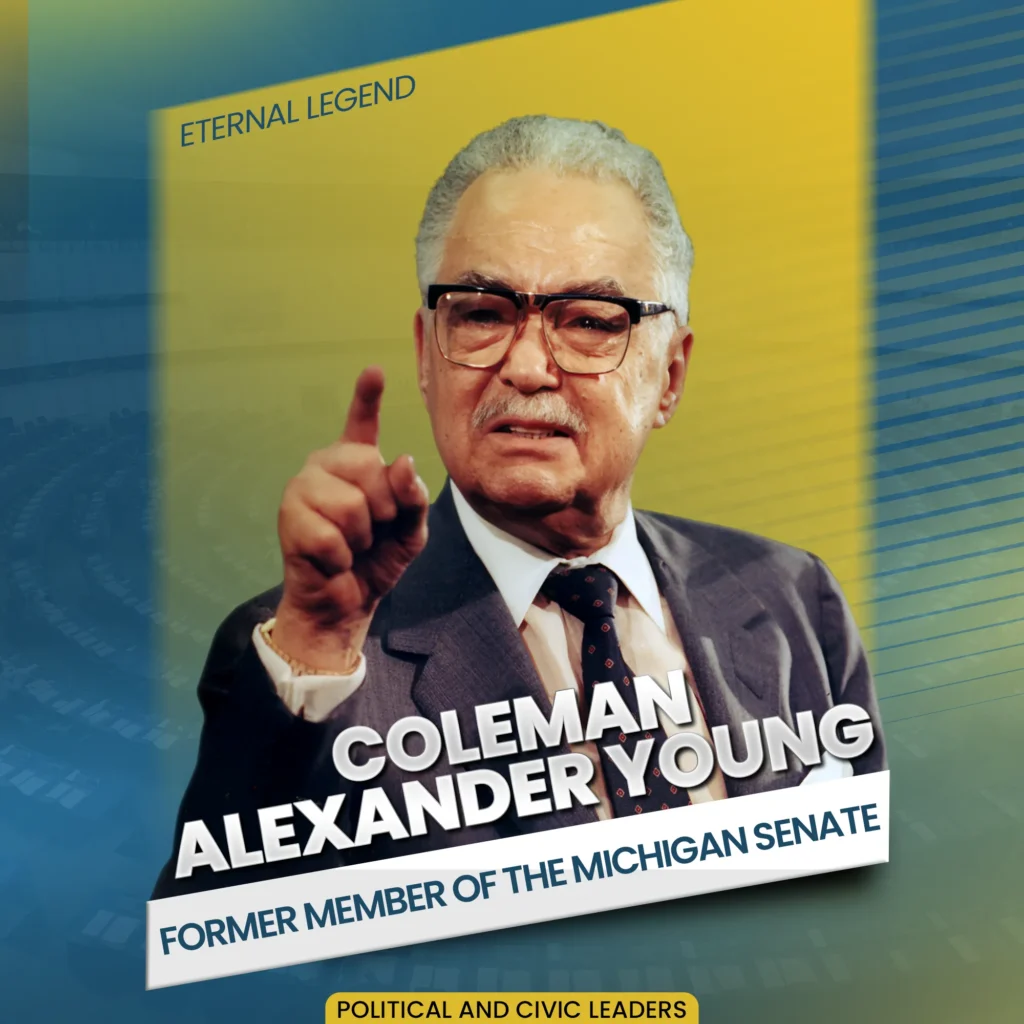In the 1950s, Young was labeled a Communist sympathizer for refusing to name names before the House Un-American Activities Committee (HUAC).
But he didn’t flinch.
Instead, he boldly stated that, “The activities of this committee are un-American.“
It was an outspoken statement for a Black man in 1952 – and it kept him under FBI surveillance for years.
Yet in Detroit, it made him a legend, and he turned that reputation into power in 1964, serving as the first Black man in the Michigan State Senate.
Over the next decade, he passed civil rights laws, challenged discriminatory housing practices, and set his sights on something bigger.
Much bigger.
By 1967, the Detroit Rebellion had shaken the city to its core.
It was a city under siege, with a bleeding population, racial tension, and white-led institutions that treated Black neighborhoods like disposable assets.
As such, in 1973, when Coleman A. Young ran for mayor, it wasn’t just an election – it was a reckoning.
He won, but just barely, and his acceptance speech was iconic:
“I issue a warning to all those pushers, to all rip-off artists, to all muggers: It’s time to leave Detroit; hit Eight Mile Road! I don’t give a damn if they are black or white, or if they wear Superfly suits or blue uniforms with silver badges. Hit the road.”(paraphrase)
For his backers, it was a battle cry.
To his critics, it sounded chaotic.
Yet nobody could say he didn’t mean business.


 Please check your email for your login details.
Please check your email for your login details.
